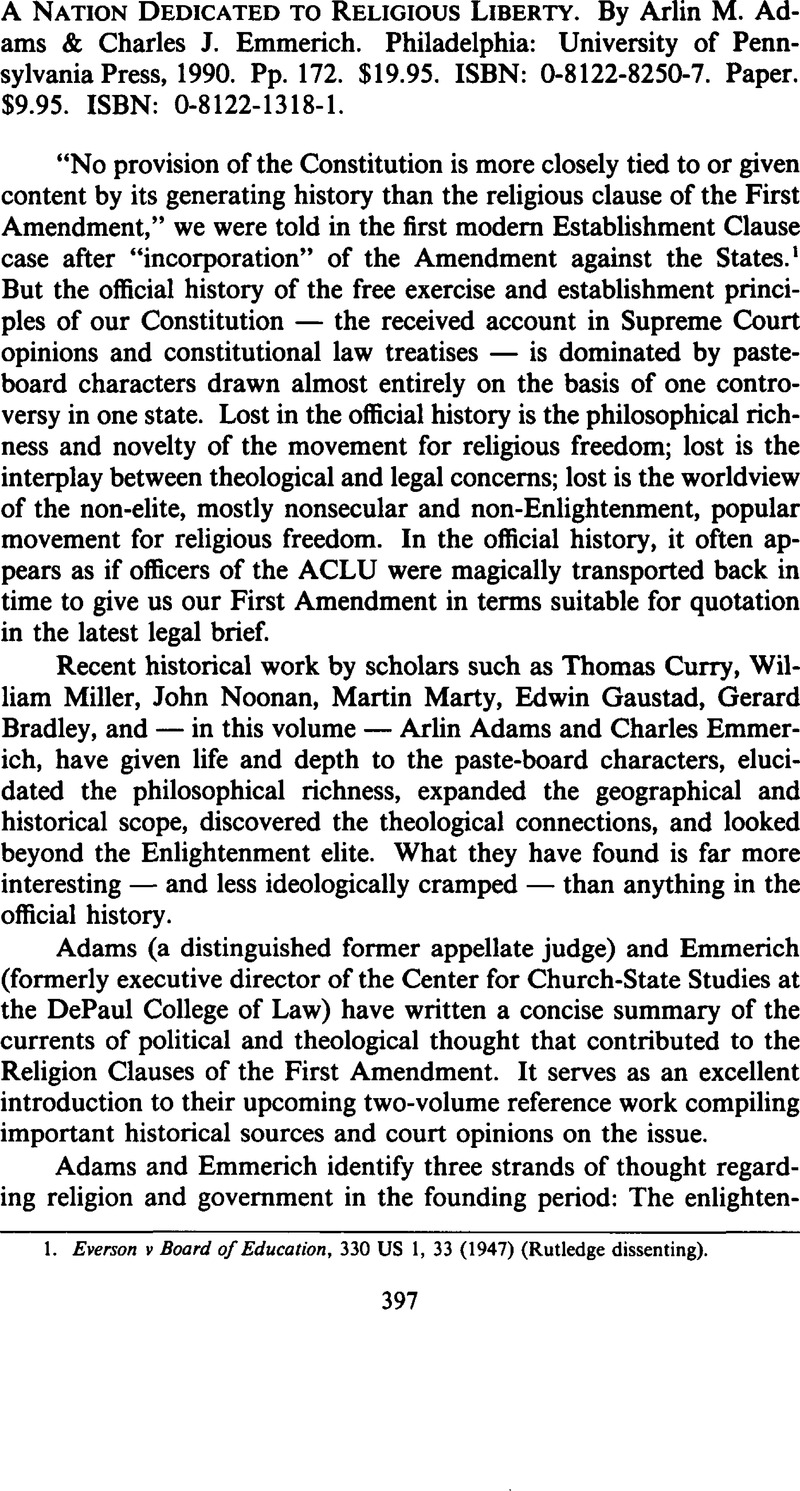No CrossRef data available.
Article contents
A Nation Dedicated to Religious Liberty. By Arlin M. Adams & Charles J. Emmerich. Philadelphia: University of Pennsylvania Press, 1990. Pp. 172. $19.95. ISBN: 0-8122-8250-7. Paper. $9.95. ISBN: 0-8122-1318-1.
Published online by Cambridge University Press: 24 April 2015
Abstract

- Type
- VII. Review Essays and Book Reviews
- Information
- Copyright
- Copyright © Center for the Study of Law and Religion at Emory University 1990
References
1. Everson v Board of Education, 330 US 1, 33 (1947) (Rutledge dissenting).
2. I detect some tension between the authors' condemnation of civil religion as “favoring traditional and majority religions” (86) and their acceptance of such public religious exercises as “invocations and benedictions at commencement ceremonies … as an acknowledgment of religion's important place in public life” (id). Presumably, invocations and benedictions will be from a mainstream religious tradition — indeed, many in the audience would be offended if an overtly Buddhist or animist prayer were offered. One wonders where to draw the line between acknowledgement of the importance of religion and establishing a “civil religion.” In my view, civil religion is not so much a “traditional and majority” religion as it is a least-common-denominator religion, which is a sectarianism no less particularistic than the alternatives.
3. Adams wrote a compelling dissent in Bender v Williamsport Area School District, 741 F 2d 538 (3d Cir 1984), vacated on jurisdictional grounds, 475 US 534 (1986), discussed in the work under review at 78-82. Judge Adams' position was recently vindicated by the Supreme Court in Board of Education of Westside Community Schools v Mergens, 110 S Ct 2356 (1990).
4. 110 S Ct 1595 (1990) (holding that, with a few exceptions, the Free Exercise Clause does not require exemptions from generally applicable laws that interfere with religious practice). See McConnell, , Free Exercise Revisionism and the Smith Opinion, 57 U Chi L Rev 1109 (1990)CrossRefGoogle Scholar.
5. 110 S Ct 688 (1990) (holding that the Religion Clauses do not bar state taxation of the distribution of religious materials by an evangelistic ministry).
6. Precursors of Smith and Swaggart can be found in Tony & Susan Alamo Foundation v Secretary of Labor, 471 US 290 (1985) (holding that members of a religious community who work without pay for religious reasons can be forced to receive the minimum wage), and Ohio Civil Rights Comm'n v Dayton Christian Schools, 477 US 619 (1986) (declining to intervene in state investigation into discharge of a teacher by a fundamentalist school for violation of religious tenet against mothers of small children working outside the home). But see NLRB v Catholic Bishop, 440 US 490 (1979) (using first amendment principles to interpret federal statute to exempt religious schools from labor laws that would interfere with ecclesiastical control over the school).


